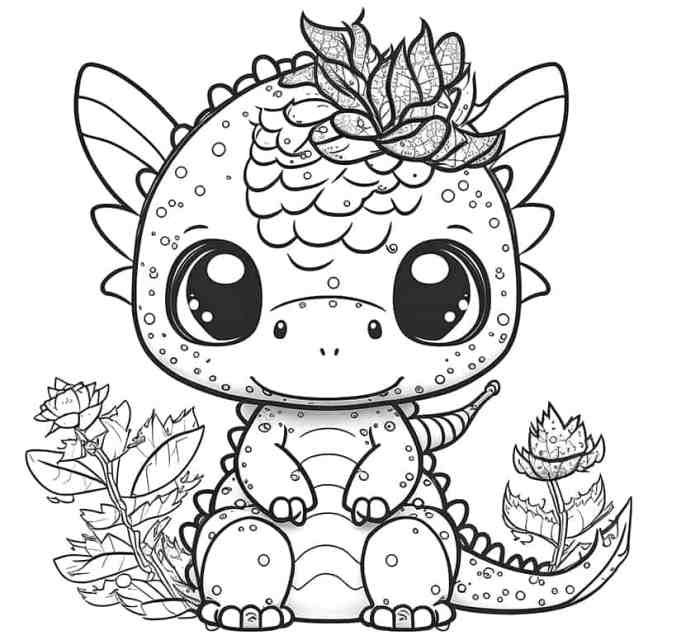Design Elements of Effective Animal Coloring Pages: Animal Blank Coloring Pages

Animal blank coloring pages – Creating engaging and successful animal coloring pages requires careful consideration of several key design elements. The goal is to produce pages that are both visually appealing and fun to color, catering to a wide range of ages and skill levels. This involves a thoughtful approach to line weight, the balance of positive and negative space, page layout, and color palette selection.
Line Weight and Detail in Animal Coloring Page Designs, Animal blank coloring pages
Line weight, the thickness of the lines used in the illustration, plays a crucial role in the overall effectiveness of a coloring page. Thicker lines are generally easier for younger children to color within, preventing frustration and promoting a positive coloring experience. Conversely, thinner lines allow for more intricate details and can create a more sophisticated look, appealing to older children and adults.
The level of detail should also be considered; too much detail can be overwhelming, while too little can be uninteresting. A balance is key, ensuring there are enough interesting elements to engage the colorist without making the task overly complex. For instance, a simple line drawing of a cat might only include the basic body shape and facial features, while a more complex design might include fur texture, individual whiskers, and subtle shading variations suggested by line weight changes.
Positive and Negative Space in Animal Illustrations for Coloring
The interplay of positive and negative space is essential for creating visually balanced and interesting animal illustrations. Positive space refers to the area occupied by the animal itself, while negative space is the surrounding empty area. Effective use of negative space can enhance the overall composition, preventing the animal from appearing cramped or cluttered. It allows the animal to breathe and helps to draw the eye to the key features of the illustration.
For example, a coloring page featuring a bird in flight might utilize a large amount of negative space to emphasize the bird’s movement and grace. Conversely, a detailed illustration of a lion might have less negative space, focusing on the richness of detail in the mane and body. The balance between these two elements significantly influences the overall aesthetic appeal and the ease of coloring.
Examples of Different Coloring Page Layouts that Highlight Animal Features Effectively
Different layouts can highlight specific animal features and create a more dynamic and engaging coloring experience.
| Layout 1 | Layout 2 | Layout 3 | Layout 4 |
|---|---|---|---|
| Image Description: A full-body portrait of a playful monkey swinging from a branch, emphasizing its long limbs and expressive face. The layout is vertically oriented, utilizing negative space around the monkey to highlight its movement. | Image Description: A close-up of a majestic lion’s head, focusing on the intricate details of its mane and facial features. The layout is square, emphasizing the grandeur of the lion. | Image Description: A horizontal layout depicting a school of colorful fish swimming in a coral reef. The design uses repetition and varied sizes of fish to create a sense of movement and vibrancy. | Image Description: A simple, circular layout featuring a friendly owl perched on a branch. The circular shape is visually appealing and helps to focus attention on the owl’s round features. |
Creating Visually Appealing Color Palettes Suitable for Animal Coloring Pages
The choice of color palette significantly impacts the final look of the coloring page. Considering the animal’s natural colors is a good starting point. However, allowing for creative freedom is important. For example, a realistic color palette for a giraffe might include various shades of brown and tan, while a more imaginative palette could include vibrant blues, greens, and purples.
Thinking about color harmony and contrast is also crucial. Analogous colors (colors next to each other on the color wheel) create a harmonious and calming effect, while complementary colors (colors opposite each other on the color wheel) create a more vibrant and energetic look. The age group targeted should also inform the palette choice; brighter, bolder colors are often more appealing to younger children.
A palette that offers a range of light and dark shades will allow for more shading and depth in the finished artwork.
Animal blank coloring pages offer a fantastic creative outlet, allowing children to explore their imagination and develop fine motor skills. For those seeking simpler designs to start with, readily available resources like these animal coloring sheets easy provide a great introduction to the fun. Then, they can progress to more complex animal blank coloring pages, building confidence and artistic abilities step-by-step.
